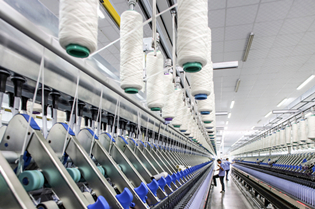Inner Mongolia's photovoltaic industry ready for upgrade
In recent years, thanks to vigorous promotion from the government of the Inner Mongolia autonomous region, renewable energy has been widely applied in the construction market, laying a foundation for the development of the clean energy industry in the region.
The autonomous region's "8337" development strategy aims to "build Inner Mongolia into an output base of clean energy that guarantees the energy supply of Beijing and the whole country.” In the field of energy conservation and environmental protection, Inner Mongolia's photovoltaic industry has already been well-established. It is now being upgraded.
Energy revolution on rooftops
The Outline of the 12th Five-Year Plan for Urban Development of Hohhot mentions that efforts should be made to expand the application scope of renewable energy.
Hohhot is a demonstration city for the utilization of solar energy recognized by the National Development and Reform Commission.
It has won nine State-level demonstration projects involving the application of renewable energy in buildings, including the integration of solar thermal technology with buildings, solar heating technology, and the integration of solar photovoltaic technology with buildings. From the establishment of the first rooftop solar photovoltaic project in Hohhot to the introduction of the distributed solar photovoltaic system in households and working places, the solar photovoltaic industry, by falling back on its solid technological foundation, has become an important vehicle to achieve integration of solar energy and buildings.
 |
|
Rooftop solar energy facilities in the Inner Mongolia Academy of Agricultural and Animal Husbandry Sciences.[Provided to China Daily] |
Inner Mongolia's projects in new energy conservation technology, new material application, and renewable energy application have been multiplying in past years.
Some new projects have been included in the national renewable energy demonstration projects, and these projects may save an equivalent of 16,600 tons of coal annually. By late 2013, the solar thermal application area of Hohhot had surpassed one million square meters.
The Inner Mongolia Academy of Agricultural and Animal Husbandry Sciences is one of the earliest organizations involved in the photovoltaic industry. To respond to the state government's call for energy conservation and emissions reduction, the academy began to prepare for the integration project of solar photovoltaic technology with buildings.
Later in 2011, the project passed inspection from authorities. The 2.06 mW photovoltaic building integration project generates over 1,200 kilowatt-hours of electricity per day.
It has also applied solar thermal technology to greenhouses and vegetable planting. The solar thermals were used for the heating supply of the labs.
“Although the preliminary investment in solar energy greenhouses is relatively higher than that of average greenhouses, the former will reap considerable profit in later periods," said the person in charge.



 Print
Print Mail
Mail





